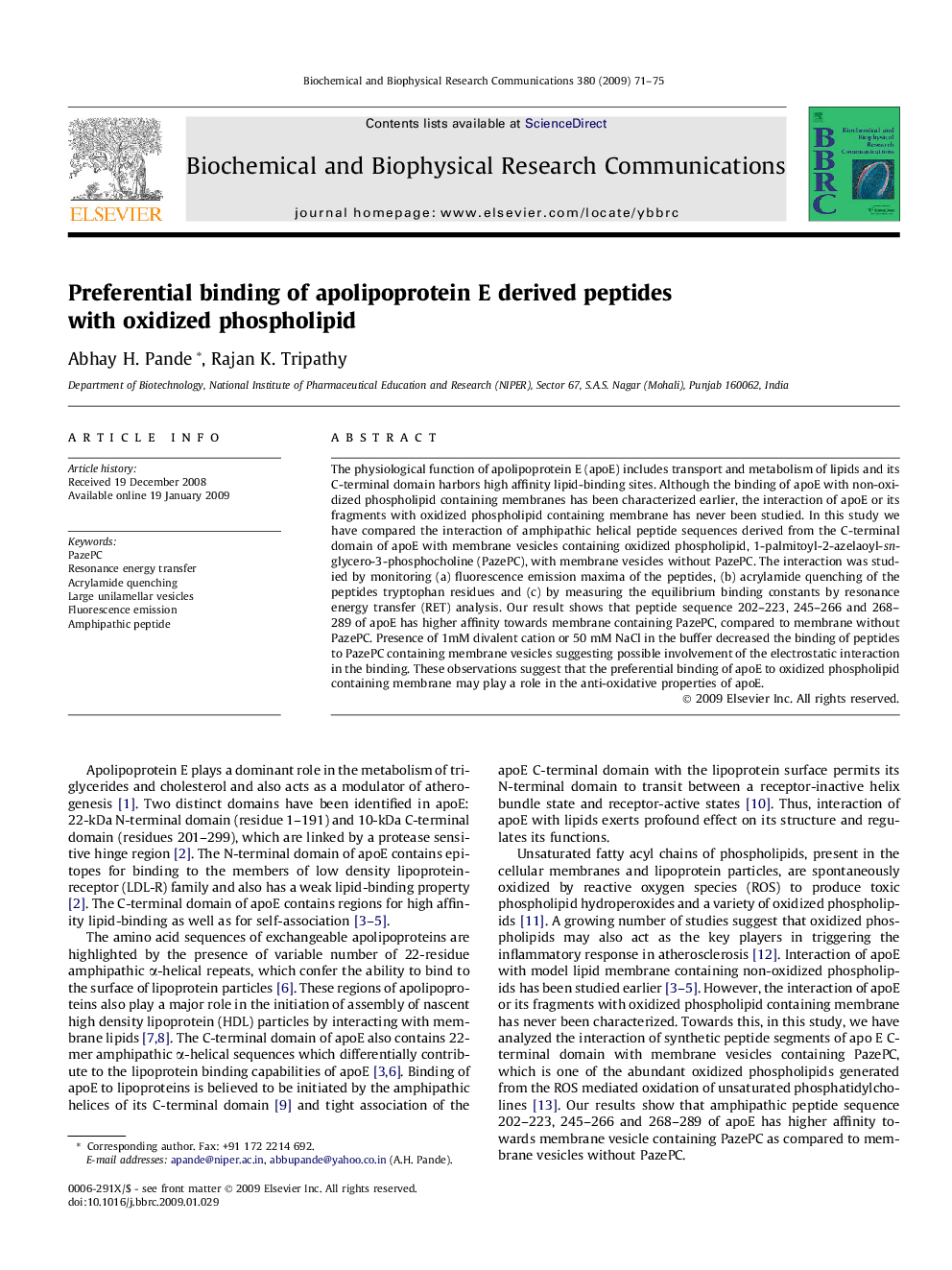| کد مقاله | کد نشریه | سال انتشار | مقاله انگلیسی | نسخه تمام متن |
|---|---|---|---|---|
| 1933946 | 1050630 | 2009 | 5 صفحه PDF | دانلود رایگان |

The physiological function of apolipoprotein E (apoE) includes transport and metabolism of lipids and its C-terminal domain harbors high affinity lipid-binding sites. Although the binding of apoE with non-oxidized phospholipid containing membranes has been characterized earlier, the interaction of apoE or its fragments with oxidized phospholipid containing membrane has never been studied. In this study we have compared the interaction of amphipathic helical peptide sequences derived from the C-terminal domain of apoE with membrane vesicles containing oxidized phospholipid, 1-palmitoyl-2-azelaoyl-sn-glycero-3-phosphocholine (PazePC), with membrane vesicles without PazePC. The interaction was studied by monitoring (a) fluorescence emission maxima of the peptides, (b) acrylamide quenching of the peptides tryptophan residues and (c) by measuring the equilibrium binding constants by resonance energy transfer (RET) analysis. Our result shows that peptide sequence 202–223, 245–266 and 268–289 of apoE has higher affinity towards membrane containing PazePC, compared to membrane without PazePC. Presence of 1mM divalent cation or 50 mM NaCl in the buffer decreased the binding of peptides to PazePC containing membrane vesicles suggesting possible involvement of the electrostatic interaction in the binding. These observations suggest that the preferential binding of apoE to oxidized phospholipid containing membrane may play a role in the anti-oxidative properties of apoE.
Journal: Biochemical and Biophysical Research Communications - Volume 380, Issue 1, 27 February 2009, Pages 71–75